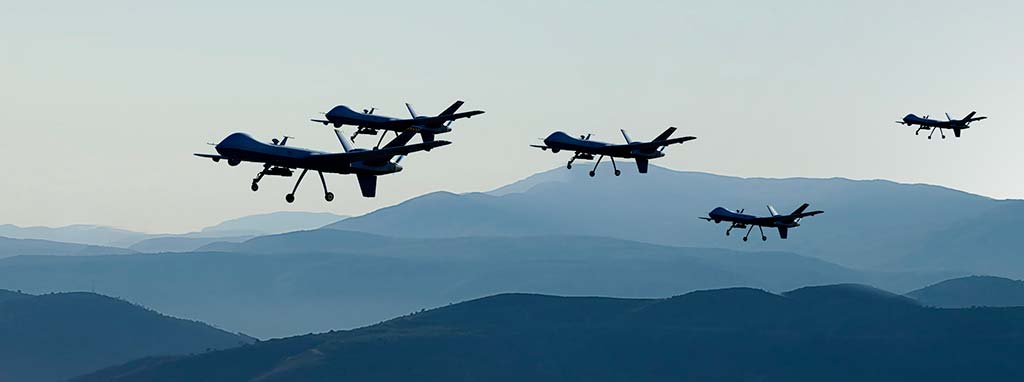Drones or RPAS are remote-controlled aircraft systems. The simplest versions used for recreational purposes require a pilot to operate them with a remote control device while observing them from the ground. As naked eye visibility would limit their range to just a few hundred metres, the more ambitious amateurs fit a video camera to the front of the drone which transmits images of the flight, to provide a first-person view (FPV). This means that they are able to control it across a radius of up to tens of kilometres, depending on the communication radio link.
The potential for RPAS to work in swarms with different tasks and capabilities is enormous.
Although the range has increased, it is still limited, which begs the question: does someone actually need to control the drone? The answer is no. A number of companies have developed autopilot systems that control the flight controls so that it can be directed along specific routes. The drone sends back telemetry information so that the person on the ground knows its location, but it does not require any further control messages to complete its mission autonomously.
Next to come is the application of artificial intelligence; so the control software will not only include the route but also a behaviour plan. For example, during surveillance tasks, it could be capable of identifying situations such as ships performing illegal operations (dumping, bunkering, sailing in restricted zones etc.), which would allow it to make decisions such as changing its path, communicating with ground personnel or simply capturing some images. We need look no further than the sentinels chasing the Zion ship along the network of tunnels in the Matrix for a precedent in science fiction.
Because they are smaller than manned aircraft, RPAS can operate in groups of several dozen known as swarms. To do this, each unit has to have sensors and enough intelligence to make it a collaborative robot. This technology is currently being developed but there are already models which, when released every few seconds, eventually form a group that flies together to perform certain tasks such as taking photographs, spreading seeds or fertilisers in fields etc. Sometimes a pilot directs some of the units so that the rest follow them. However, on other occasions, they do not require any instructions to complete the task given to them.
For now, any drone swarms that exist tend to be homogeneous units, but complex behaviours could be programmed to create fleets of heterogeneous and specialised units that will help one another. We could incorporate drones that are radio link signal repeaters, which would move around to help maintain the rest of the fleet’s communications. We could also have several units with articulated arms that build structures or transport loads between them, and units with heat sensors for fires while others carry water or perform clearing tasks. All of this information would be managed more quickly and efficiently by the RPAS themselves than the human controllers.
Technology has given us many models of autonomous drones that are highly useful individually, but as we have seen, they will have huge potential when we are able to program them with enough artificial intelligence to make them work in swarms, with different tasks and capabilities. After all, bees have been doing it for millions of years.



